Although the homestead lifestyle as a whole tends to embrace a more self-reliant, simpler existence, it does not automatically require you to remove all the fantastic technology that can make your life easier. Nor should it.
Using modern appliances is a good idea. I am sure that very few people want to return to a feudal-era farming system no matter how pure their intentions as homesteaders may be. However, most modern appliances demand energy.

Energy production has a financial cost. Making a homestead as energy efficient as possible can help to save money while also lowering your carbon footprint.
Some ways are easy, and others are more complex. Some measures will make small changes to energy efficiency while others are more dramatic.
However, no matter how little the impact of the efficiency may be, any small steps you can take will make a huge difference.
Are you ready to make your homestead more eco-friendly? These tips should help you get started.
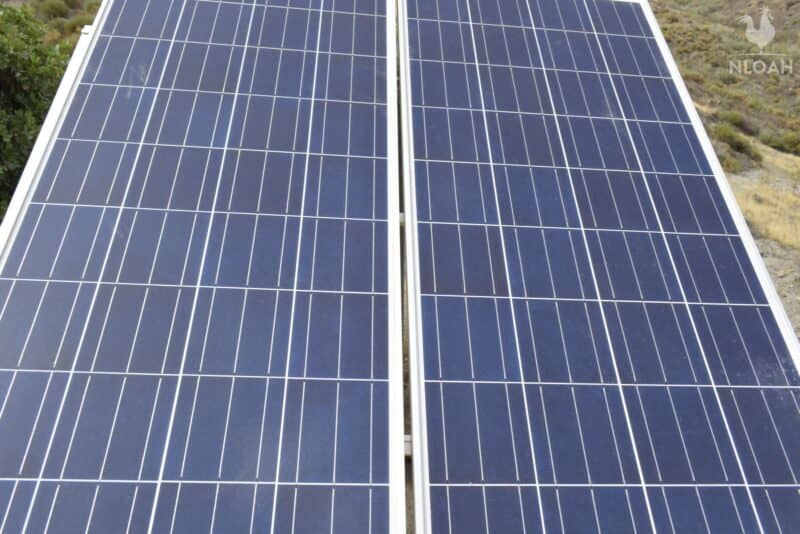
1. Install a Solar Power System
Many homesteads will require an energy supply since few will be in a location that will make a connection to the power grid possible. One of the best and most energy-efficient power sources is solar.
A solar power system turns energy from the sun into electricity. Although the equipment to set up a system may be costly, there are no further generating costs, nor is any other fuel needed. This makes solar energy highly energy efficient.
Check that your solar panels are clean.
Solar panels work by using photons that are emitted from the sun. The photons agitate electrons and create electricity. For solar panels to produce maximum energy, they should be mounted in the correct position and should be always kept clean.
A small amount of sand or even a few bird droppings can affect the power production and efficiency of these systems. Make a plan to clean your solar panels regularly.
Are solar panels damaged?
Older solar panels are often covered in glass that can be broken or cracked. Damaged panels will result in reduced power output and become less efficient. Repair or replace any damaged panels to increase efficiency.
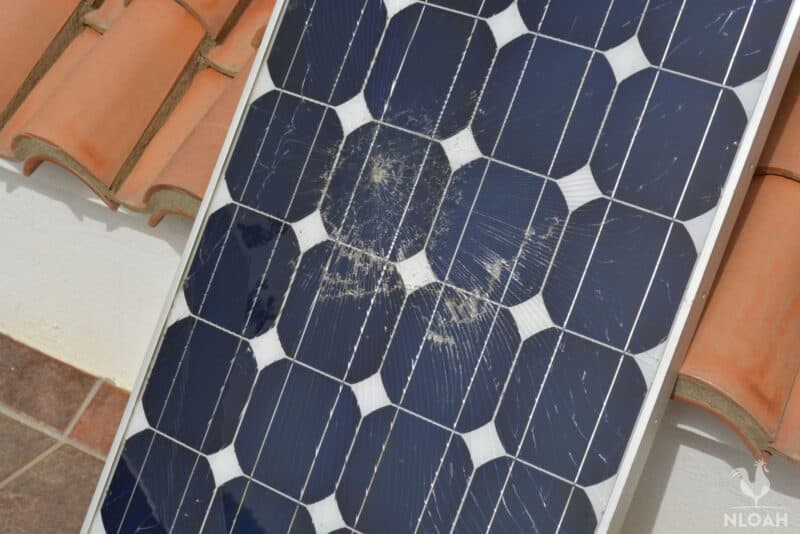
Check the wiring
Over some time, the wiring and the connections that connect solar panels can become damaged. Regular inspection and repair will help to support an efficient system.
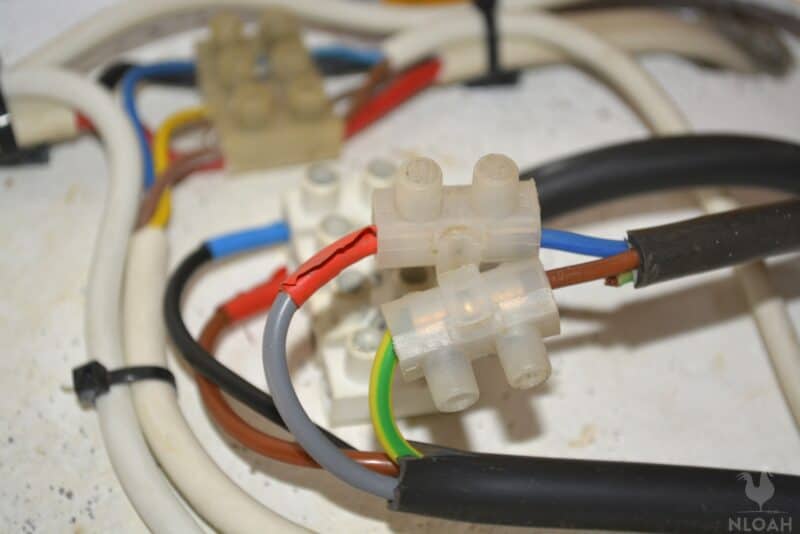
Backup battery power supply
Solar panels are relatively efficient at producing energy but what makes them super-efficient is that they can be used to charge a battery backup power supply. Ensuring that your solar installations are sized correctly for homesteads power requirements is essential. The correct system will supply surplus power that, when stored in a battery, can be used at night or during bad weather.
An adequate battery backup should supply a homestead with sufficient energy to supply all its energy needs for two to three days.
Battery maintenance
Batteries that are charged by solar panels do require regular maintenance to ensure that they work efficiently and correctly. Water levels, electrolyte readings, and wire connections should all be checked and cleaned regularly. Allowing electricity to flow easily will improve the efficiency of the system.
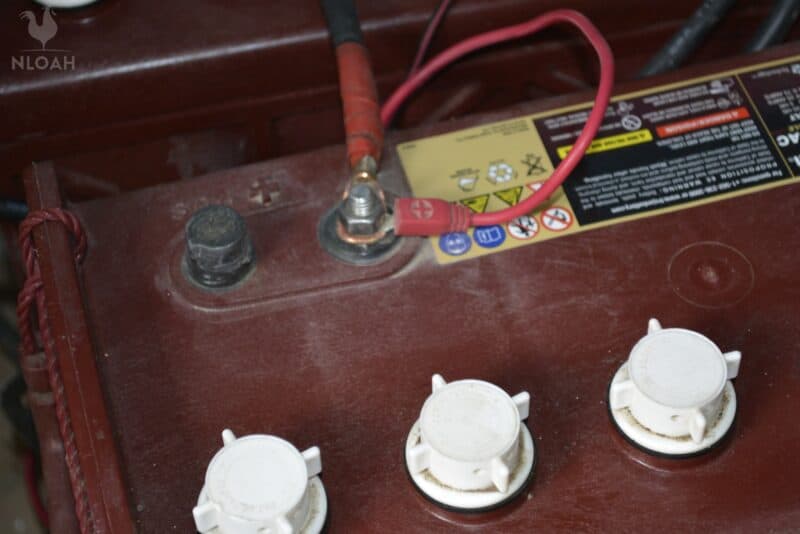
2. Install Movable Solar Panels
If the tips above aren’t enough to get your solar panel system as efficient as possible, consider this.
Solar panels are most efficient when they are positioned directly in line with the sun. That sounds obvious.
Unfortunately, the sun will be in the premium position for only a short time each day. Being able to move solar panels aroundextends the period when they are exposed to the full sun. This will improve the overall efficiency of the system.
3. Consider a Wind Turbine
Using the power of the wind is an alternative method of generating electricity that is common within the homestead community.
Ensuring that the correct size turbine is installed at the correct height will help to make it more efficient. Conducting a regular check on growing vegetation will also help to prevent the wind flow from being interrupted.
4. Try Hydroelectric Power
For homesteads that have access to a reliable source of running water, like a waterfall or stream, hydroelectricity is a great choice. This type of system uses a generator in a similar way to a wind turbine that is driven by flowing water.
The main advantage of this type of system is that a good amount of moving water will supply electricity 24 hours a day, 7 days a week.
This type of system does require specific conditions to function well and can be expensive to install. Of course, it’s probably not the best choice in drought-prone areas.
5. Ditch the Generator
Many types of generators can be used to supply energy for the homestead. They all run on the same basic principle: they use fuel to supply a rotary motion that, in turn, creates electricity.
Using fuel to create energy is not very efficient, as most fuels are expensive and increase carbon footprints.
To make a homestead energy efficient, it makes sense to add extra solar panels or wind turbines so that the generator is used as little as possible.
6. Invest in Alternative Fuels
Biofuels are other types of energy sources that could be attractive to the homesteader looking to become more energy-efficient. This technology has been used to produce fuel from waste products, such as used oil from restaurants, on a large commercial scale.
The technology can also be adapted to produce fuel on a small scale from many waste biological products. This fuel can be used to power vehicles or generators. With the correct equipment, it can also be used to heat homes and water.
Wood gasification is a method of producing a combustible gas that can be used to power a generator from wood. The gas is produced by superheating wood without burning it to a point where combustible gas is generated.
However, some thought as to how the wood is to be heated must occur in order to ensure that this is truly an energy-efficient method.
7. Use Good Old Muscle Power
Although today much of the equipment that is used around the homestead relies upon electricity there are many small devices such as lamps and radios that have a manual winding mechanism to charge the integrated battery.
An electric-powered juicer is not necessary when a good old-fashioned manual one is available:
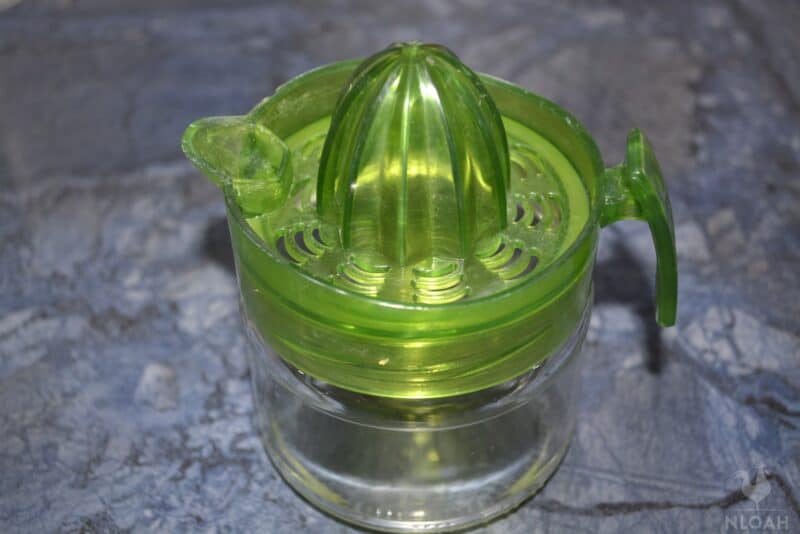
This type of equipment may not be on everyone’s high priority, “must-have” list, but it can make a small difference in helping a homestead be more energy efficient.
8. Consider Combining Technologies
The downside to most alternative energy sources is that there are times when they don’t function efficiently. Solar panels will not produce energy as efficiently during cloudy days or much energy at night. Wind turbines will not produce energy when there is no wind.
To make a homestead energy efficient, a combination of technologies is the answer. For most, a solar system is the ideal main energy provider with a wind turbine and generator as a backup.
9. Use Rechargeable batteries
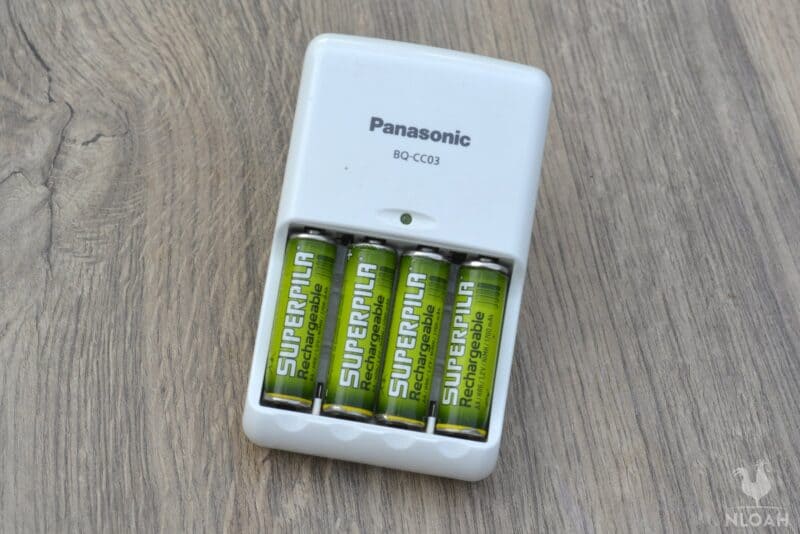
Many small electrical devices do not need to be plugged into a main AC power supply since they can be run from batteries:
- radios
- lights
- power tools
Batteries can be expensive, and most soon end up in the trash. A more efficient option is to use rechargeable batteries. These can be charged many times from other power sources, such as solar.
10. Ditch the Water Pumps
On most homesteads water needs to move to where it is needed. The water supply may be from:
- Streams
- Well
- Water tank
Electric pumps, especially those that need to move the water to a higher level, need to be high-powered, and require a generator or a dedicated fuel-powered engine.
Even water supplies within the house may use electric pumps. This system of moving water is not very energy efficient.
The most energy-efficient way of moving water is to use gravity. Planning where water is and where it needs to go will help to make the homestead more energy efficient.
Pump once to a raised water store and allow gravity to do the rest. Alternatively, investigate pumping methods that do not require AC power or a generator.
Pumps are available that work when they are connected directly to a solar panel. Obviously, this pump will not work at night. However, if it is working all day, then nighttime may not be a problem anyway.
Ram pumps use no external energy. These pumps use the water pressure within the water supply system and will continue to work unless they are stopped.
11. Use Greywater to Reduce the Amounts of Water Used
Moving all this water around has a cost, so it makes sense to make the best use of water. Using water that has already been used once for a second time around is undeniably energy efficient.
Water from the sink that has been used for washing up can be used to water the garden or to flush the toilet.
12. Low Water Flush Systems Save Water
Some toilet systems and their modern technologies have the ability to flush with a reduced amount of water. Older systems can be adjusted to alter the amount of water needed to fill them. Remember, the toilet does not necessarily require flushing after every use.
Although this water-saving is small, for each flush over a period of time, the reduced water and accompanying power usage will become significant.
13. Save Rainwater
For those homesteads that pump their water from a well, anything that can reduce the amount that needs to be pumped will naturally improve energy efficiency.
One method of decreasing the amount of well water needed is to save rainwater. A small amount of guttering and a few pipes can supply a huge quantity of water over a period of time.
Even in dry climatic areas, collecting rainwater from a roof can provide between 1,000 and 2,000 liters in a single day.
A little investigation will be needed to ensure that there is no chance of this water being contaminated from bird droppings and construction materials, but this is thoroughly worthwhile.
14. Save Water When Running a Hot Water Tap
Most homesteads will need to run the water from a hot tap for a few minutes until the hot water comes through. Collect this water for other uses rather than let it go down the drain.
Don’t leave your tap running unnecessarily. It is easy to leave a tap running when undertaking simple tasks like brushing teeth. The tap doesn’t need to run, and it is a huge waste of water.
Tankless water heaters are more efficient.
Everyone needs hot water but there are many ways of heating it. Solar hot water systems are one of the most efficient since the sun does all the work without requiring any extra power requirement.
In areas where the amount of sun is not consistent or sufficient, other methods of heating hot water are necessary.
Electricity from a battery that has been charged from a solar system can be used to heat water. A tankless hot water system is almost always more efficient since power will only be used when the water is being used.
15. Rethink Household Energy
Energy is used inside a house in several ways. Heating and cooling the house, in addition to cooking, are the most power-hungry activities.
One of the most energy-efficient ways of heating a house and cooking is to use wood logs. For most homesteads, firewood is in abundance, a free resource and can be used to heat water or be thrown in a fire pit.
Seasoned logs are more efficient than wet wood, but in a pinch, any old scraps can also be used.
Cooling a house can be a little more demanding. Air conditioners are very power-hungry but fortunately are not always necessary.
A small solar or rechargeable fan can often supply sufficient air movement to produce a cooling effect.
16. Choose the Correct Light Bulbs
Lighting a house will also require significant power, as all rooms will have at least one (and potentially several) light sources. Light bulb technology has changed over the past few years. It is now possible to achieve the same level of light using a fraction of the energy that was required by older types.
Using the correct light bulbs could reduce the amount of energy used by more than 50%. Remembering to turn lights off in rooms or areas that are not being used is also an easy way to improve energy efficiency.
Lighting certain areas outside on a homestead are important for safety and security since most will have little other light apart from the moon.
Rather than using energy to supply this lighting, it is far more energy-efficient to use lights that are charged by the sun during daylight hours.
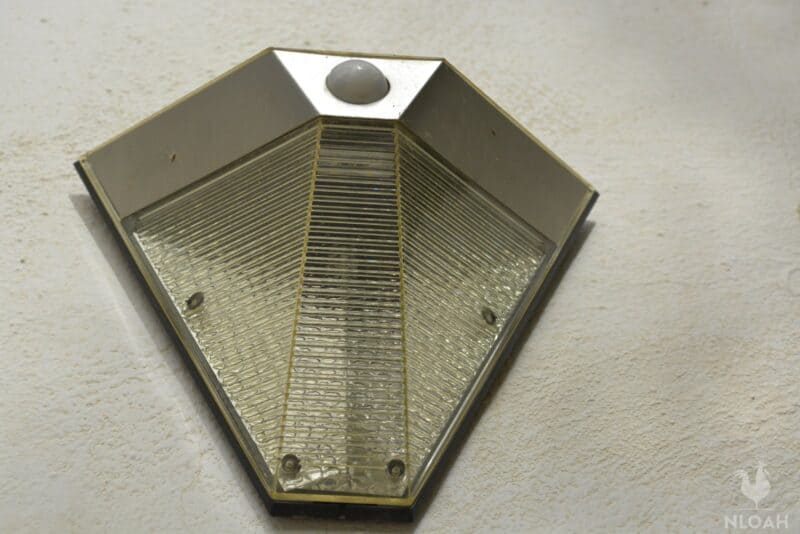
17. Choose Household Appliances Carefully
Living on a homestead does not mean that it is necessary to forgo the advantages and conveniences that modern appliances can provide. However, the question of what is actually needed and what is instead a luxury item must be considered.
Does the homestead need several fridges and freezers? A super-duper washing machine with many lights and buttons? Bread-making machines? Air conditioner? Most homesteads will probably not want or need all these.
Often, the simple, basic appliances are all that is needed.
Choosing the most energy-efficient models will be necessary.
Manufacturers supply information about the power consumption of appliances. Comparing these figures will show which ones are the best buy.
In addition, considering appliances such as fridges that can run on propane will also help with efficiency.
18. Consider Building a Root Cellar
It’s possible to store food that would normally be kept refrigerated in a root cellar. A root cellar uses the natural cooling properties of the earth to preserve food for up to a year without any external energy input.
Building a root cellar does not need to be complex and some homesteads may even have existing buildings that can be converted for this use.
19. Implement Smart Home Construction Techniques and Materials
Modern materials and building techniques will also be useful in making a homestead energy efficient. It is far easier to construct an energy-efficient house than to retrofit one after it has been constructed.
Orientation of a House is Important
If building a homestead from scratch, consider the orientation of the house. Its position in relation to the sun and the prevailing wind are both important factors that will influence its energy efficiency.
Insulate to save energy
To make an existing homestead energy-efficient, adding extra insulation is one of the most efficient methods. Less energy will be needed to heat the house if less energy is escaping. The same goes for cooling.
Modern techniques and materials such as sheep’s wool and straw alongside more traditional synthetic products can all be effective.
Consider window size and glazing
A vast amount of energy escapes through the windows. Consequently, a key energy efficiency trick is to ensure that windows are not too large and are at least triple glazed.
As a retrofit, secondary double glazing can be added, and any potential drafts from the window frames will be prevented.
As a quick fix to reduce draughts, tape can be placed over any gaps in the window frames.
Remember, heat can also enter the house through the windows. Preventing this heat transfer will reduce the amount of energy needed to cool the house.
Skylights for extra light
The problem with making windows small is that they can make the interior dark. Adding skylights in strategic positions can help to introduce light into a space avoiding the need for lighting.

20. Use nature to increase energy efficiency
Planting trees in certain positions around the house can shade or expose the house to the sun at certain times of the year.
The Wrap
This list of 20 ways to make your homestead more energy-efficient shows that many techniques can be effective.
While some methods will prove complex and often expensive to implement, others are very simple and quick to change.
Installing a solar power system, for instance, requires precise calculations to size the system correctly. That way, it will produce sufficient energy to meet the requirements of the homestead. Although they are now becoming cheaper, they are still somewhat expensive to install.
Other techniques such as placing tape over any gaps in window frames to prevent draughts are a quick and cheap fix. Don’t assume you need to make all of these changes at once – start with the smallest and least expensive as an introduction.
Some energy savings are small while others are more significant, however, all the savings combine over a period to make a homestead significantly more energy efficient.
A homestead that is energy efficient will be cheaper to and will also have a lower carbon footprint.
Remember, no matter what our lifestyle may be, we can all do a little to save the planet.
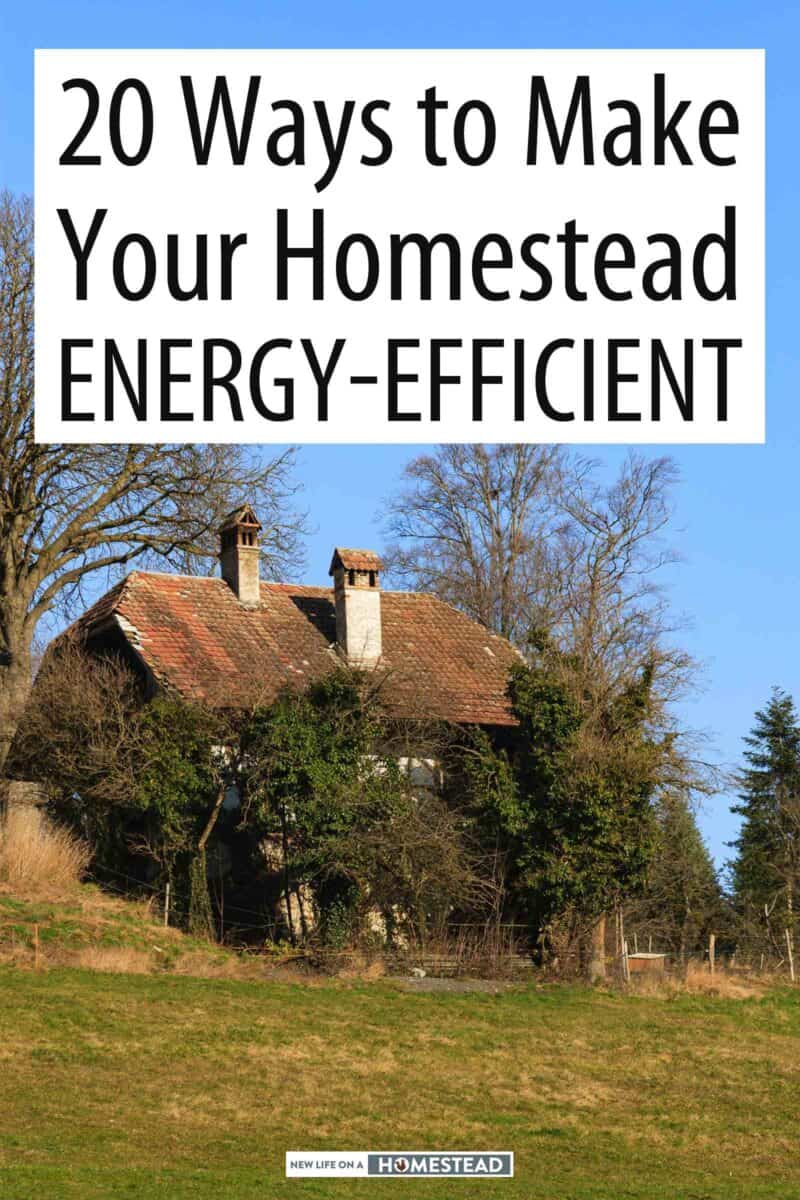

Gordon is a British homesteader established in Spain, growing large amounts of veggies and fruits. He also has a high degree of self-sufficiency as he is procuring his own water, wood, and solar energy.
